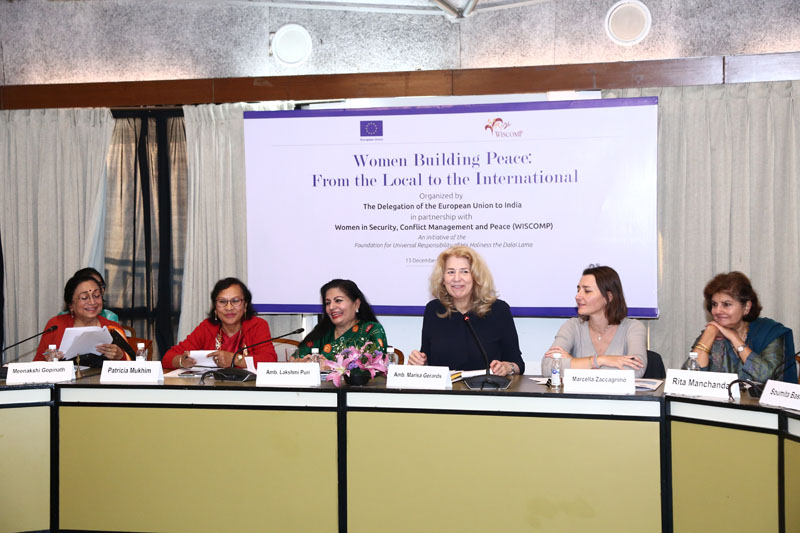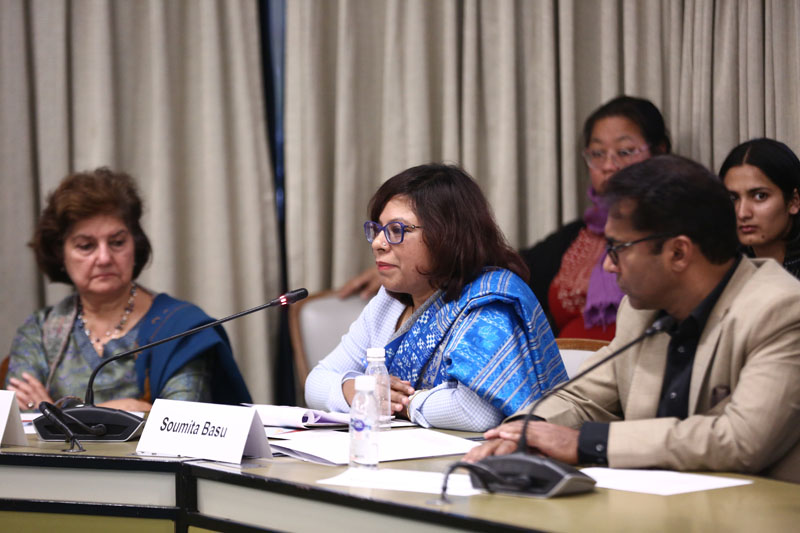
The world continues to grapple with the aftermath of the COVID-19 pandemic and other major upheavals, including climate change and increased geopolitical volatility – the war in Palestine, Ukraine and continuing instability in Afghanistan, among others. In the midst of increasing legitimacy for muscular politics and militarization and the waning power of the UN to quell humanitarian crises, it is important to reflect on women’s role vis a vis global, national and local levels. How if at all do they respond to the pressing need to ‘build peace’?
EU-WISCOMP dialogue, Women Building Peace: From the Local to the International offered space on exchanging best practices on how women build peace from the local to the international levels. Experiences and case studies from theatres of conflict from Rwanda to Sri Lanka were used to identify both the challenges and the possibilities that women’s peacebuilding entails. The speakers – diplomats, civil society actors, media persons and academics looked at how women build peace through a multi-chromatic lens. Some of our speakers included, Ambassador of the Netherlands to India, Marissa Gerards, Ambassador Lakshmi Puri, Deputy Head of Mission of Italy to India, Marcella Zaccagnino, Editor Shillong Times, Patricia Mukhim, Assistant Director-Research at United Services Institute, Dr. Roshan Khanijo and other dignitaries.

The deliberation foregrounded the following questions: • In the largely male space of foreign policy, is a gender lens changing the way in which strategic issues are being discussed? • How have women diplomats fostered linkages between grassroots initiatives and international forums? • What change has women’s inclusion in UN Peacekeeping brought about? What are some of the challenges that women peacekeepers face? • During situations of violence, how do women build bridges of understanding between groups? What techniques of dialogue and reconciliation have they used? What special skills and perspectives do they bring that are otherwise not available? • How have women media persons contributed to building peace? What does responsible journalism require of them in situations of intra and inter-state conflicts? • What are the implications of the macro level changes at the UN level on peacebuilding and gender responsiveness? • How can a new Global Compact, i.e. “Our Common Future” be informed in a manner that alters the global architecture to be more just and inclusive?
It is WISCOMP’s hope that such dialogues will create synergy between the peacebuilding work of women at the local level and the international forums. Drawing on best practices from the EU and India, the deliberations will explore how this synergy can be channelized to create a hospitable environment for women’s leadership in the local, national and international policy spaces.
